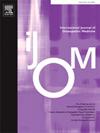Palpation and its learning: A professionalization approach to acquiring a complex skill
IF 1.5
4区 医学
Q2 MEDICINE, GENERAL & INTERNAL
引用次数: 0
Abstract
Palpation is a cornerstone of osteopathic practice, serving both diagnostic and therapeutic purposes. In France, the professionalization of osteopathy accelerated in 2014, when regulatory decrees mandated structured, competency-based teaching. This aligns with broader trends in science education emphasizing curriculum academization, professional collaboration, and skills-oriented learning. Among the six core competencies in osteopathy, “Performing an osteopathic intervention” includes palpation, assessed on precision, relevance, and clinical efficacy. Pedagogical guidelines underscore the need to regularly update teaching methods in light of scientific advances.
Physiologically, palpation involves complex neurobiological mechanisms. Specialized receptors in the fingertips process shape, pressure, and vibration, while affective touch engages psychoemotional dimensions that can influence therapeutic outcomes. Targeted training improves inter-examiner reproducibility and may even induce structural brain changes.
From an educational perspective, socio-constructivist and professionalization frameworks are particularly relevant. They highlight the interplay between individual development, guided practice, and communal learning. Students benefit from sensitive training and cognitive scaffolding that fosters reflection and skill refinement.
Beyond individual effort, peer learning and mentorship are equally vital. Interactions with teachers and peers nurture shared values, feedback, and role modeling, all of which reinforce confidence and self-efficacy. The emergence of a shared vocabulary and use of standardized tools further support diagnostic precision.
Ultimately, palpation is a technical skill embedded in social meaning and professional identity. Its development contributes to integrating learners into the osteopathic community of practice. As a structured, evidence-based, and patient-centered modality, palpation continues to evolve within a broader network of clinicians and educators.
触诊及其学习:一种获得复杂技能的专业化方法
触诊是整骨疗法实践的基石,服务于诊断和治疗目的。在法国,2014年,当监管法令要求结构化的、基于能力的教学时,整骨疗法的专业化加速了。这与科学教育强调课程学术化、专业合作和技能导向学习的更广泛趋势相一致。在整骨疗法的六项核心能力中,“实施整骨疗法干预”包括触诊,评估其准确性、相关性和临床疗效。教学指南强调需要根据科学进步定期更新教学方法。生理学上,触诊涉及复杂的神经生物学机制。指尖上的特殊受体处理形状、压力和振动,而情感触摸涉及可以影响治疗结果的心理情感维度。有针对性的训练提高了考官之间的重复性,甚至可能引起大脑结构的变化。从教育的角度来看,社会建构主义和专业化框架特别相关。他们强调个人发展、指导实践和集体学习之间的相互作用。学生受益于敏感的训练和认知支架,促进反思和技能的完善。除了个人努力之外,同侪学习和指导同样至关重要。与老师和同伴的互动培养了共同的价值观、反馈和角色榜样,所有这些都增强了信心和自我效能。共享词汇表的出现和标准化工具的使用进一步支持了诊断的准确性。最终,触诊是一种嵌入社会意义和职业身份的技术技能。它的发展有助于学习者融入整骨疗法的实践社区。作为一种结构化的、循证的、以患者为中心的方式,触诊在临床医生和教育工作者的更广泛的网络中继续发展。
本文章由计算机程序翻译,如有差异,请以英文原文为准。
求助全文
约1分钟内获得全文
求助全文
来源期刊
CiteScore
2.20
自引率
36.80%
发文量
42
审稿时长
3 months
期刊介绍:
The International Journal of Osteopathic Medicine is a peer-reviewed journal that provides for the publication of high quality research articles and review papers that are as broad as the many disciplines that influence and underpin the principles and practice of osteopathic medicine. Particular emphasis is given to basic science research, clinical epidemiology and health social science in relation to osteopathy and neuromusculoskeletal medicine.
The Editorial Board encourages submission of articles based on both quantitative and qualitative research designs. The Editorial Board also aims to provide a forum for discourse and debate on any aspect of osteopathy and neuromusculoskeletal medicine with the aim of critically evaluating existing practices in regard to the diagnosis, treatment and management of patients with neuromusculoskeletal disorders and somatic dysfunction. All manuscripts submitted to the IJOM are subject to a blinded review process. The categories currently available for publication include reports of original research, review papers, commentaries and articles related to clinical practice, including case reports. Further details can be found in the IJOM Instructions for Authors. Manuscripts are accepted for publication with the understanding that no substantial part has been, or will be published elsewhere.

 求助内容:
求助内容: 应助结果提醒方式:
应助结果提醒方式:


